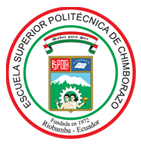Mathematical modeling of travel times in trolleybus system
DOI:
https://doi.org/10.47187/perf.v1i30.244Keywords:
functional of cost, trajectory, Pontryagin's Maximum Principle, optimal controlAbstract
In this study, the optimization of the mobilization of Trolleybus users on the route that covers the avenues Maldonado, 10 de Agosto and Galo Plaza Lasso, which are transited by the integrated Trolleybus system in Quito, was addressed. The methodological approach began with the consideration of a deterministic displacement of the articulated bus from one stop to the next, limited to the C1 circuit, which covers a 10-kilometer stretch of the 22.5 kilometers of the total 22.5 kilometers of the route.
A horizontal and straight trajectory was assumed, assuming that all traffic lights remained green in order to maintain a constant speed during the trip. A mathematical model was developed based on a functional of cost representing the travel time between stops, subject to a system of ordinary differential equations describing the dynamics of the articulated vehicle as a function of time.
The purpose of this study was the implementation of optimal time control, using Pontryagin's maximum principle. To achieve this, a numerical simulation was performed to identify the optimal speed profile of the articulated vehicle on this route. This approach provides a solid basis for making informed decisions and improving the efficiency of Quito's public transport.
A horizontal and straight trajectory was assumed, assuming that all traffic lights remained green in order to maintain a constant speed during the trip. A mathematical model was developed based on a functional of cost representing the travel time between stops, subject to a system of ordinary differential equations describing the dynamics of the articulated vehicle as a function of time.
The purpose of this study was the implementation of optimal time control, using Pontryagin's maximum principle. To achieve this, a numerical simulation was performed to identify the optimal speed profile of the articulated vehicle on this route. This approach provides a solid basis for making informed decisions and improving the efficiency of Quito's public transport.
Downloads
References
Inicio [Internet]. Corredores del Sistema; [consultado el 7 de septiembre de 2022]. Disponible en: https://www.trolebus.gob.ec/index.php/gestion/nuestras-paradas
Pozo Valdiviezo, A Modelización matemática de tiempos de viaje de la Troncal Central Trolebús. [Internet]. Quito: UCE; 2019 [citado: 2022, diciembre]
Pontryagin LS, etc., editores. Mathematical theory of optimal processes. Nashville, TN, Estados Unidos de América: John Wiley & Sons; 1962.
Bellman R. Introduction to the mathematical theory of control processes: Linear equations and quadratic criteria v. 1. San Diego, CA, Estados Unidos de América: Academic Press; 1968.
Evans LC. An introduction to mathematical optimal control theory version 0.2 [Internet]. Berkeley.edu. [citado el 29 de diciembre de 2022]. Disponible en: https://math.berkeley.edu/~evans/control.course.pdf
Knowles G. Introduction to applied optimal control. San Diego, CA, Estados Unidos de América: Academic Press; 1982.
Kirk DE. Optimal Control Theory: An Introduction. Dover Publications; 2012.
Lewis FL, Vrabie D, Syrmos VL. Optimal Control: Lewis/optimal control 3e. 3a ed. Chichester, Inglaterra: John Wiley & Sons; 2012.
Pickhardt R. Time- and energy-optimal control of an electric railcar. En: ITSC2000 2000 IEEE Intelligent Transportation Systems Proceedings (Cat No00TH8493). IEEE; 2002.
de Movilidad S. DIAGNÓSTICO DE LA MOVILIDAD EN EL DISTRITO METROPOLITANO DE QUITO PARA EL PLAN METROPOL TANO DE DESARROLLO TERRITORIAL (PMOT) [Internet]. Gob.ec. [consultado el 24 de septiembre de 2022]. Disponible en: https://gobiernoabierto.quito.gob.ec/wp-content/uploads/documentos/pdf/diagnosticomovilidad.pdf
Carrion A, Goetschel AM, Sanchez N. BREVE HISTORIA DE LOS SERVICIOS EN LA CIUDAD DE QUITO COORDINADOR MARIOVASCONEZ [Internet]. Edu.ec. [consultado el 24 de septiembre de 2022]. Disponible en: https://biblio.flacsoandes.edu.ec/libros/digital/49071.pdf
Hu GS, Ong CJ, Teo CL. Minimum-time control of a crane with simultaneous traverse and hoisting motions. J Optim Theory Appl [Internet]. 2004;120(2):395–416. Disponible en: http://dx.doi.org/10.1023/b:jota.0000015690.02820.ea
Cots O. Geometric and numerical methods for a state constrained minimum time control problem of an electric vehicle. ESAIM Control Optim Calc Var [Internet]. 2017;23(4):1715–49. Disponible en: http://dx.doi.org/10.1051/cocv/2016070
Bressan A, Piccoli B. Introduction to the mathematical theory of control. 2007.
Ern A. Contrôle de modèles dynamiques [Internet]. Enpc.fr. [citado el 29 de diciembre de 2022]. Disponible en: http://cermics.enpc.fr/~ern/MAP434/poly.pdf
Trélat E. Contrôle optimal : théorie et applications [Internet]. Upmc.fr. [citado el 29 de diciembre de 2022]. Disponible en: https://www.ljll.math.upmc.fr/trelat/fichiers/livreopt.pdf
Athans M, Falb PL. Optimal control: An introduction to the theory and its applications. Dover Publications; 2013.
Alekseev VM, Tikhomirov VM, Fomin SV. Optimal control. 1987.
Strauss A. An introduction to optimal control theory. 1968a ed. Berlín, Alemania: Springer; 2012.
Beal L, Hill D, Martin R, Hedengren J. GEKKO Optimization Suite. Processes (Basel) [Internet]. 2018 [citado el 29 de diciembre de 2022];6(8):106. Disponible en: https://www.mdpi.com/2227-9717/6/8/10
Boscain U, Piccoli B. Optimal syntheses for control systems on 2-D manifolds. 2004a ed. Berlin, Germany: Springer; 2003.
de Dios Ortuzar J, Willumsen LG. Modelling Transport. 4a ed. Standards Information Network; 2011.
Dal Bianco N, Lot R, Gadola M. Minimum time optimal control simulation of a GP2 race car. Proc Inst Mech Eng Pt D: J Automobile Eng [Internet]. 2018;232(9):1180–95. Disponible en: http://dx.doi.org/10.1177/0954407017728158
Saccon A. Minimum time maneuver for a nonholonomic car with acceleration constraints: Preliminary results. En: Proceedings of the 2005 IEEE International Symposium on, Mediterrean Conference on Control and Automation Intelligent Control, 2005. IEEE; 2005.
Li B, Wang K, Shao Z. Time-optimal trajectory planning for tractor-trailer vehicles via simultaneous dynamic optimization. En: 2015 IEEE/RSJ International Conference on Intelligent Robots and Systems (IROS). IEEE; 2015.
Published
How to Cite
Issue
Section
License

This work is licensed under a Creative Commons Attribution-NonCommercial 4.0 International License.


























